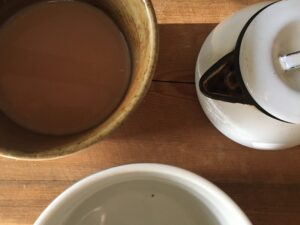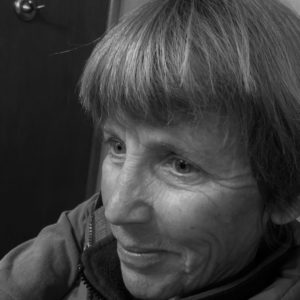Story is how I move through unsettled times. Times when words like curfew, protest, tear gas, riot, fire, looting, violence, rage and justice take their place beside plague, pandemic, lockdown, quarantine, testing and n95. I write this on the last day of May, knowing that by the time these words come to you, four days hence, the world may have shifted significantly. The speed at which 2020 has thrown us out of complacency is remarkable. And yes, many saw it coming. And yes, many welcome its arrival. And yes, there will be naysayers; many will blame, divide, and deny. And some of us of a certain longevity will feel drawn to look back over our shoulder at the deeply unsettled decade during which we came of age, and remember the outrage of it, the loss of lives, the great music, all the ideas we thought were ours alone. And we’ll have to acknowledge that the energy now belongs to others, the risk and courage, the integrity, mistakes and triumphs are theirs. It will be useful to trust them. It will be helpful to walk with them.
I would like to tell you the story of a man I will call Tom Brown. Tom could be trusted. He is of my vintage, and though I didn’t know him then, he lived through the last great unsettled time and called himself an evolutionary. He understood that because history loops back on itself like a well-coiled rope, the arc of human evolution can seem pointlessly repetitive, random or fickle. But evolution needs us. It invents and reinvents and does a rewrite of every reinvention. It’s trying to get it right. This is a lot like what Tom Brown does, or did. He took an old idea, almost as old as what we call civilization, and reworked it in his wood shop until he had the perfect coffin. Tom is in the coffin business, or was. He is now in the Intensive Care Unit of our local hospital, struggling to breathe.
I first met Tom over a cup of tea in the front of his shop in Cave Creek, Arizona. That’s where the coffin idea took off. He moved up north after that, bringing the whole business with him, and I lost track of him—until last week. Last week I heard from a friend that Tom was sick, and it made me remember that first time, sitting across from one another in his pine-scented wood shop behind his house. The open window in front of me gave a view of the back side of Skull Mesa, where I’d hiked with a friend a few years earlier in the company of a stray brindle greyhound. The greyhound turned out to be Tom’s dog. I told him we kept telling her to go home but she wouldn’t. She clearly liked our company, or the chance to sniff the wind and chase a few rabbits. She was with us all day.
In the shop that afternoon, Tom poured us both a cup of tea. He had an electric kettle and a tin of good English tea—loose tea—and a couple of cups. I was hoping for milk and honey and sure enough, armed for every occasion like a good coffin builder, he had a can of milk and a jar of honey. It was very good tea, strong, the way I like it, but not creating shaky hands. Our tongues were loosened by it though, and he told me the story of how he came to his profession.
He hadn’t always been a coffin builder; he started off as an accountant. But he could see as well as the next guy that coffins had a good chance of always being in demand. Sure, people like his brother were considering being composted, but that service was only offered in the state of Washington and his feeling was it would only very slowly increase in popularity. Anyway, he wasn’t in business for the money. He’d dropped all his accounting logic. He just loved the size, shape and materials involved in coffins. They weren’t just boxes, but they were also boxes, containers for very special things, each one made as if to last forever while giving a nod to the fact that nothing does. As a kid, he’d always liked jewelry boxes. He liked their intricacy and the care with which a jewelry box was made. So he decided to extend that care to coffins, and started making simple but beautiful boxes for, as he put it, our retirement.
In his wood shop we were surrounded by his creations. They were mostly made of pine, very clean, without knots. He had carved fishes and rivers into the sides of some, and they weren’t just any fishes, he told me, they were golden trout. The hinges on the coffin lids were fastened on the inside so the surface of the lid wasn’t interrupted. Every coffin had a number stamped on the bottom of it. That day, the highest number was 33. He had 33 coffins to his name so far, and at least a dozen of them were out in the world and “in use.” The rest were waiting for their moment, and their moment would come. People, he said, have an easier time considering their own dissolution if they can still look great on the outside.
It wasn’t until we stood up from our tea that I realized our tea table was a coffin, a beauty I wouldn’t have minded owning myself. That was when Tom told me that one of his creations was for his personal use and would never be sold. It would go out the door only with him in it. Number 13. After he made it he realized it would be a hard one to sell, carrying the burden of bad luck, though a box built to house a body is by nature a sure sign that someone’s luck has expired. Tom’s, I hope, has not. I hope he will come back from his dark dreaming, his stay in the ICU, and if he does I’ll suggest we take our tea outside this time, in sight of the mountain, away from the beautiful relics of a life he almost lost.


